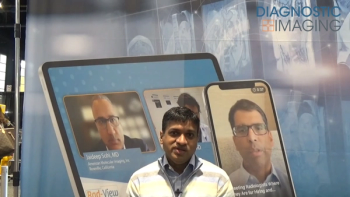
New digital cardiac cath system paces comeback at Fidelity Medical
InstaCine D2000 uses DVD technologyFidelity Medical is banking on a new line of digital image management products to be released next month to help improve its financial picture. The Wayne, NJ, company will use the American Heart Association
InstaCine D2000 uses DVD technology
Fidelity Medical is banking on a new line of digital image management products to be released next month to help improve its financial picture. The Wayne, NJ, company will use the American Heart Association meeting in Orlando, FL, as a springboard for its launch of InstaCine D2000, a new image management and archiving system for cardiac catheterization labs.
InstaCine D2000 is designed to replace film in cardiac cath labs, and supersedes Fidelity's older cath lab digitization offering, InstaCine, according to Michael O'Shea, president of Fidelity. The product will be one of the first to hit the medical imaging market using digital video disk (DVD) technology, which has much higher storage capacity than CDs.
InstaCine D2000 stores cardiac cath studies on 12-inch DVD platters made by Philips Electronics, with each disk capable of storing images from 40 to 50 patient studies. The product is DICOM-compliant and runs on Windows NT workstations, making it easy to integrate the system with other computers in a hospital's network. The older version of InstaCine was DOS-based and did not support DICOM.
InstaCine D2000's DVDs can be stored in jukeboxes ranging in size from six to 100 platters, and studies can also be stored to CD-R or magneto-optical disk media. Up to 1200 patient studies can be accessible online at any time, according to O'Shea. At the AHA meeting, Fidelity will display the system with a 50-platter jukebox.
The system is also capable of storing images from DICOM-compliant modalities other than cardiac cath labs, and thus could be used as an archiving solution for all of a hospital's studies.
"We are ultimately offering the hospital complete archiving of all modalities," O'Shea said. "If they were to buy our system initially to archive cath lab studies, they could add other labs to it, on the same patient database."
The first InstaCine D2000 beta system was installed at St. Michael's Medical Center in Newark, NJ. Shipments are planned to begin next month.
Fidelity is also developing InstaSpot 2000, which targets angiography suites rather than cardiac cath labs. CD Vue, another new product, is Windows NT-based software that enables referring physicians to read CDs containing studies digitized with InstaCine D2000.
The new products come after two years of rebuilding at Fidelity. The company ran into financial trouble in 1995 after settling several shareholder lawsuits related to revenue overstatments made by the company's management between 1989 and 1992. Fidelity was acquired in May 1995 by Medical Laser Technologies, a publicly traded holding company whose only real source of revenue is from Fidelity equipment sales (SCAN 8/16/95). MLT is actively looking at several acquisitions in the medical imaging and information storage markets, O'Shea said.
Fidelity's sales have yet to return to the level they were before the company ran into financial trouble, and Fidelity posted sales of about $1.5 million for its most recent fiscal year ending in March. Fidelity is hoping for a rebound, however, due in part to the new product introductions. The company expects revenues for the current fiscal year to come in at around $6 million, according to O'Shea.
"With these new products, we're looking for an increase in revenues," he said.
Newsletter
Stay at the forefront of radiology with the Diagnostic Imaging newsletter, delivering the latest news, clinical insights, and imaging advancements for today’s radiologists.



























